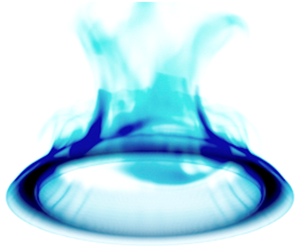Article contents
Scaling of the puffing Strouhal number for buoyant jets and plumes
Published online by Cambridge University Press: 21 May 2020
Abstract

Prior research has shown that buoyant jets and plumes ‘puff’ at a frequency that depends on the balance of momentum and buoyancy fluxes at the inlet, as parametrized by the Richardson number. Experiments have revealed the existence of scaling relations between the Strouhal number of the puffing and the inlet Richardson number, but geometry-specific relations are required when the characteristic length is taken to be the diameter (for round inlets) or width (for planar inlets). Similar to earlier studies of rectangular buoyant jets and plumes, in the present study we use the hydraulic radius of the inlet as the characteristic length to obtain a single Strouhal–Richardson scaling relation for a variety of inlet geometries over Richardson numbers that span three orders of magnitude. In particular, we use adaptive mesh numerical simulations to compute puffing Strouhal numbers for circular, rectangular (with three different aspect ratios), triangular and annular high-temperature buoyant jets and plumes over a range of Richardson numbers. We then combine these results with prior experimental data for round, planar and rectangular buoyant jets and plumes to propose a new scaling relation that describes puffing Strouhal numbers for various inlet shapes and for hydraulic Richardson numbers spanning over four orders of magnitude. This empirically motivated scaling relation is also shown to be in good agreement with prior results from global linear stability analyses.
- Type
- JFM Papers
- Information
- Copyright
- © 3M Company and The Author(s), 2020. Published by Cambridge University Press
References
- 8
- Cited by




